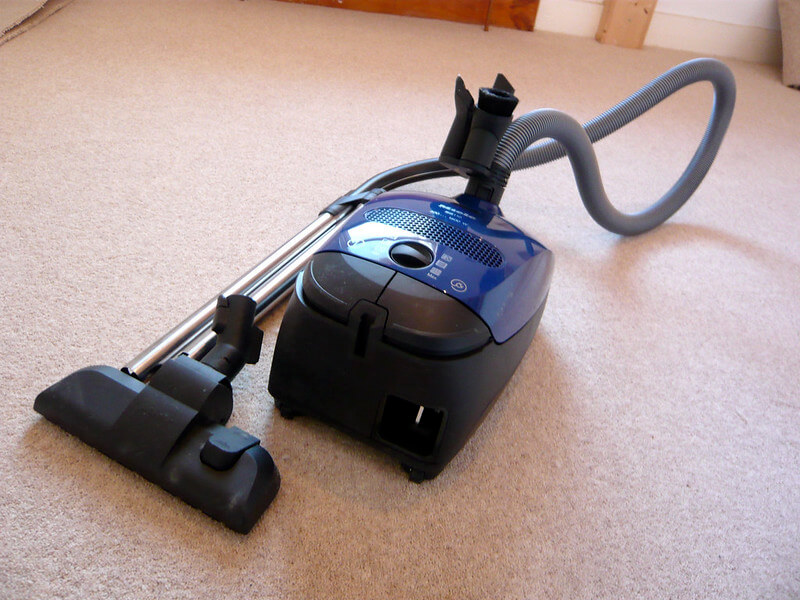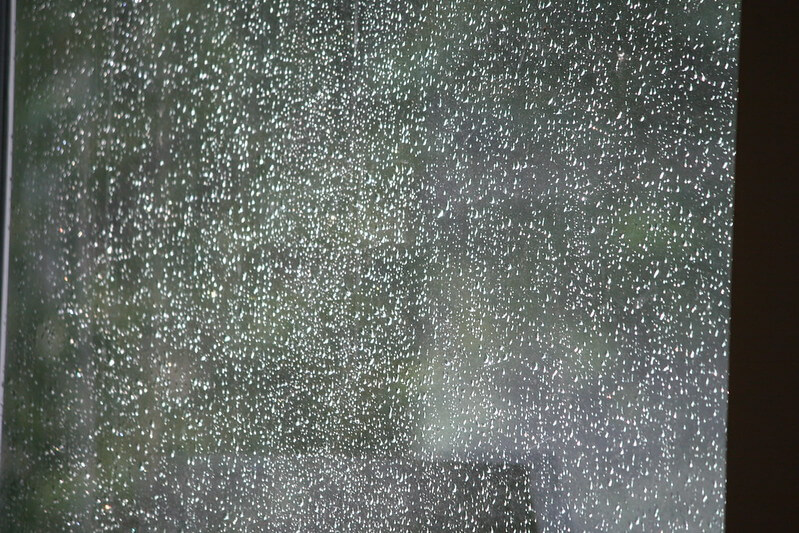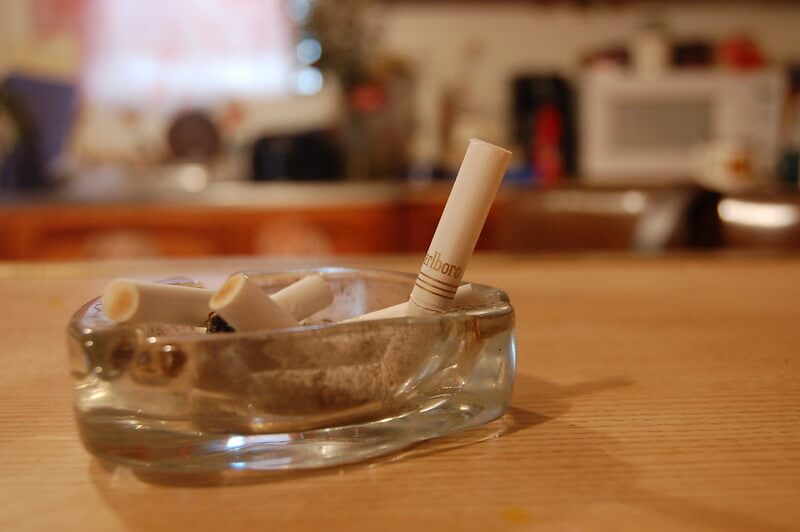Poor air quality in your home can significantly affect your overall health and mood. According to the Environmental Protection Agency (EPA), Americans, on average, spend approximately 90 percent of their time indoors, where air pollution can often be 2 to 5 times higher than the outdoors.
The World Health Organization (WHO) also reports that indoor air quality is a leading cause of disease and premature deaths of over 3.8 million people in developing countries. Checlk out some natural ways to clean the air in your home.
Indoor air pollution sources range from cleaning supplies, insecticides, paints, building materials, and combustion sources such as cooking appliances, fireplaces, and wood and coal heating that may release harmful byproducts such as carbon monoxide and particulate matter.
The truth is you cannot wholly eliminate indoor air pollution. However, you can take simple yet effective steps to improve the air quality in your home. Here are some tips you can try.
1. Invest in an Air Purifier
Using an air purifier is one of the fastest yet most effective ways of tackling poor indoor air quality. Dust, pollen, and pet dander commonly found in homes are microscopical, making them impossible to clean. Different types of air purifiers include ultraviolet, activated carbon, ionizing, and filter-based. Filter-based air purifiers are the most common around.
A filter-based air purifier traps and remove most air pollutants by sucking in the air, passing it through a filter, and releasing it back to your home, cleaner and pollutant-free. HEPA filter-based purifiers can reliably trap and remove almost 99% of smoke, pollen, dust, and other small particulate matter.
Ultraviolet air purifiers use ultraviolet light to kill and remove bacteria, viruses, pathogens, and micro-organisms like mold in your home. However, UV technology effectively kills bacteria and viruses, most air purifiers that employ this technology start by filtering the air first with an air filter and using UV light at the final stage.
An activated carbon air filter should be your best pick to effectively remove odors, smoke, fumes, and gases in your home. Activated carbon is made to be very porous and has molecular-sized pores for better absorbent ability and chemical bonding. Activated carbon air purifiers are less effective in trapping particulate matter like dust and pollen. However, most models will include HEPA filters to trap particulate matter in the air.
Ionic or Negative Ion air purifiers work by emitting negative ions into the air. The negative ion bonds with positively charged airborne particles like dust and pollen, making them heavy that they eventually fall to the ground. However, though it seems advanced, ionic air purifiers are less effective because they merely mask pollutants rather than eliminate them from the air. There is a possibility that contaminants get free and recirculate the air again.
Check out the Germ Guardian True HEPA Air Purifier with a UV light sanitizer and an activated charcoal filter that helps reduce unwanted odors. Read more about the types of air purifiers.
2. Improve Ventilation
Increasing proper ventilation to and from a room is one of the cheapest ways to allow fresh air to move into your home. Ventilation also allows airborne chemicals and other pollutants to circulate out of your home, thus limiting your exposure to these contaminants.
Opening the windows and doors is one of the options you can try to rejuvenate the air quality in your home. If you live in a crowded city, choose to open the windows and doors when traffic or air pollution is at the lowest. In the winter and cold months, opening the windows for brief periods to allow fresh air can go a long way in improving the air quality.
When using products with chemicals that might release pollutants into the air, make sure to ventilate the space to avoid building these chemicals.
Aside from opening windows and doors, there are other ways you can increase ventilation and improve airflow in your home. Exhaust fans, window air conditioners, or opening the outside air intake of an HVAC system, if yours has one, can all improve airflow in your home.
3. Keep Your Home Clean
A cleaner home is a healthier home. Good indoor hygiene significantly reduces dust, pet dander, and other pollutants. When cleaning your home, you should focus on reducing the accumulation of dust, mold, or pet dander.

Regular vacuuming and mopping are ways to pick up dust around your home. Using a Vacuum cleaner creates a powerful suction that ensures dust and other small particles do not blow back into the air. Mopping picks up on the dust that vacuuming leaves behind. You can use only plain water for mopping and skip soaps and cleaners. Microfiber mops are reportedly more effective at capturing dust and dirt than traditional mops.
Cleaning or regularly changing your bedsheets, drapes, clothes, and other items that tend to attract allergens can reduce dust mites, dust, and other pollutants they are holding. When possible, consider using dust mite-proof cover on mattresses and pillows. Learn how to remove pet hair from the air.
4. Use Eco-Friendly Cleaning Products
A clean home is unlikely to harbor dust and other indoor air pollutants. However, cleaning with the right products is also crucial. Green cleaning or using eco-friendly cleaning products that use natural ingredients will ensure you leave not a toxic footprint behind, thus protecting your health and your family’s.
Besides improving your home’s air quality, eco-friendly cleaning products make your home safer, help the environment, save you money, and make you a green role model. Creating green cleaning products and supplies can also try your creative side.
5. Keep a Healthy Humidity Level
Mold, mildew, and other micro-organisms like dust mites love moisture and damp conditions. Kitchens, bathrooms, or additional moisture-ridden areas are their havens of choice. Keeping the humidity at the right level at around 30 to 50 percent. This will help keep these indoor allergens under control.
Using a dehumidifier, especially in the summer when it is hot and humid, can help reduce indoor air humidity. Proper placement of a dehumidifier in damp and moist areas is essential.
Apart from using a dehumidifier, there are other ways to dehumidify your home. Opening the windows, using an exhaust fan when cooking, bathing, or using the dishwasher, venting the clothes dryer outside, fixing leaky plumbing, and emptying the drip pan of your AC and dehumidifier.
6. Regularly Maintain/Replace Your Air Filters
For forced-air heating systems, changing the filters periodically will ensure dust and other airborne particles stop recirculating your home. Apart from ACs, other household appliances such as air purifiers, vacuum cleaners, kitchen vents, and clothe dryers should have their filters adequately maintained.
Air ducts that distribute hot and cold air around your home should also be adequately maintained. Dust, pet dander, and even mold can accumulate and blow into your home. Cleaning these air ducts by hiring a professional should ensure they circulate clean air around your home.
7. Keep Indoor Plants
According to a study by the NASA Scientific and Technical Information (STI), it was concluded that house plants, together with an activated carbon filter, can be used to reduce indoor air pollutants by removing contaminants such as cigarette smoke and organic solvents and possibly radon. Plant roots also destroy bacteria, viruses, and other organic chemicals by converting them into new tissue.
Though house plants work slowly and might seem insignificant in removing pollutants, the impact over time should improve.
Depending on your home, check the type of plants you choose. Some thrive in sunlight, and some hardly need any maintenance. Apart from improving the air quality, proper placement of plants can spruce your home decor.
8. Remove Shoes at The Door
According to a guide on reducing contaminants in your home, it is estimated that around 30 to 40 percent of indoor pollutants are brought in from outdoors. One way contaminants get into your home is through shoes.
Removing shoes before going into your home is an effective way of reducing contaminants. Placing doormats near exterior doors can also trap dust, pollen, and other allergens so you can store your shoes worry-free in your home after removal. Shoe storage racks should also be placed as close to the door as possible to prevent moving contaminants around your home.
Enforcing a shoe removal policy can be awkward, especially for visitors or guests. However, you can try subtle ways to get guests to remove their shoes. Presenting them with comfy indoor slippers or asking them nicely will always get the job done.
9. Reduce Fragrances/ Air Fresheners
Using air fresheners and other fragrances to cover unpleasant indoor odors is very tempting.
According to a study on air fresheners and indoor built environments, air fresheners, even the so-called organic or green, can emit hazardous chemicals that will impair the air quality. Air fresheners are also responsible for adverse health conditions of over 20% of the general US population.
When shopping, avoid products that list fragrance or perfume. Even fragrance-free or unscented labeled products should not be overly trusted. Look for plant-based scents, naturally derived or labeled as 100% essential oils.
Instead of scented aerosol sprays, you can use a non-aerosol citrus spray to clear the air. These are also effective at dissolving airborne odors. Read our guide on how to make a room smell good without using an air freshner.
10. Use Non-Toxic Home Renovation Materials
The materials you choose when renovating your home can significantly affect your health. Many construction materials from paints and primers, plywood, adhesives, and other surface finishes contain toxins and chemicals that can be released into your home. As you plan your next home renovation project, sourcing non-toxic building materials is the right option to avoid degrading the air quality of your home.
The best option is to use natural materials such as raw lumber, straw bales, clay plaster, mortar, or products that have not been substantially processed. Instead of new building materials, you can also opt for recycled materials such as glass tiles, lumber, carpet, kitchen countertops, steel, and drywall.
11. Avoid Smoking Indoors
Under the 2006-2007 Health Act, the UK banned smoking in enclosed public spaces and workplaces. In the US, the Smoke-Free Act (SFAA) of 2002 protects New York City workers against the harmful effects of smoking (secondhand smoke) by making all workplaces smoke-free.
Tobacco particles can remain airborne and at harmful levels for up to five hours after use. So, designating your home as a smoke-free zone is a no-brainer.
Apart from cigarettes, burning incense sticks, candles, or anything else for recreational purposes will emit carbon dioxide and carbon dioxide into the air. Burning incense is said to rival cigarette smoke in indoor air quality pollution. A diffuser with organic and pure essential oils is the best alternative to candles and incense. Diffusers can give a calming fragrance without smoke and have other health benefits.








